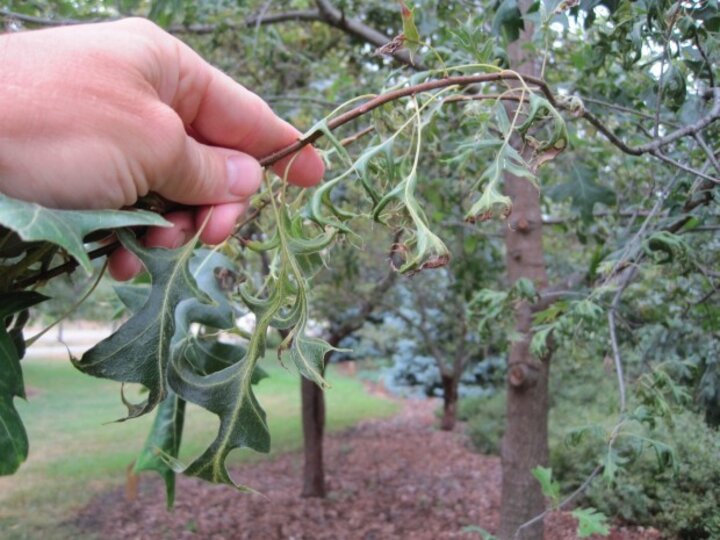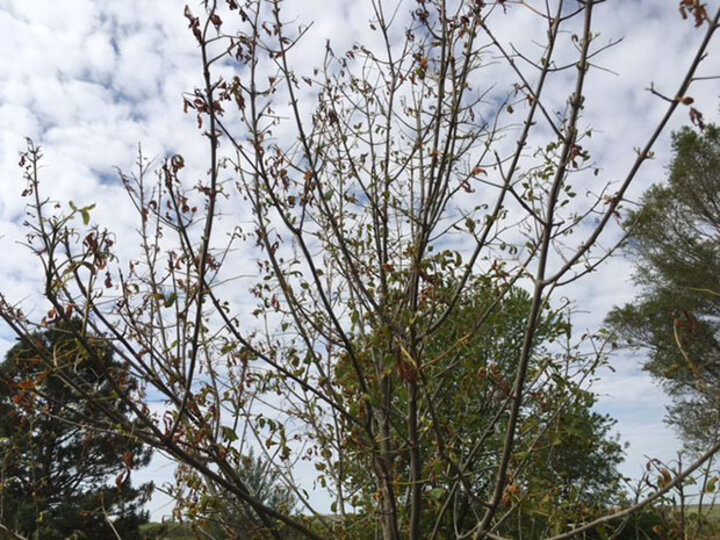

Take Steps to Avoid Unintended Targets
This year’s wet and windy spring has put field and yard work behind schedule throughout much of Nebraska — especially in areas where replanting will be needed due to heavy rains, wind, or hail. Applicators may be tempted to push the envelope of acceptable weather conditions in applying pesticides, which can result in misapplications. The Nebraska Department of Agriculture is reporting an above-normal number of early-season drift complaints.
Common pesticides known to drift in the Midwest include 2,4-D and dicamba, used for broadleaf weed control in crop fields, golf courses, and lawns. If you can smell the chemical in the air, you likely are damaging non-target plants such as trees and shrubs.
When managing applications for drift, remember that trees and shrubs can receive significant damage, particularly when affected year after year. Herbicide drift can cause tree leaves to become stunted, twisted, feel leathery, curl or drop. Tree growth will slow and branches will die back.
The damage is more than cosmetic: the tree canopy may become thinner, and combined with distorted leaves, the tree can’t produce the same amount of energy as a non-affected tree. Eventually it can die.
Preventing tree damage is much easier and less expensive than dealing with damage after it has occurred. These tips can help prevent drift damage:
- Apply pesticides when winds are 3-10 mph. Less than 3 mph and any possible drift cannot be planned for. Swirling winds at these conditions may cause drift to move in unexpected directions. More than 10 mph and the likelihood greatly increases for drift to move the pesticide a significant distance off the target site. Knowing the wind direction can help the applicator manage drift by planning their application at a time when, if drift were to occur, damage would be minimal.
- Temperature can play an equally critical role in helping reduce pesticide drift. High temperatures may cause chemicals to volatilize and cause vapor drift issues, even on days with appropriate wind conditions. When low wind conditions and clear skies occur, applicators should be extra cautious of temperature inversions which can create a stable air mass that suspends small spray particles and results in extreme drift events. If an inversion is recognized, stop application immediately.
Resources
The following website and Nebraska Extension publications provide further information on this topic:
